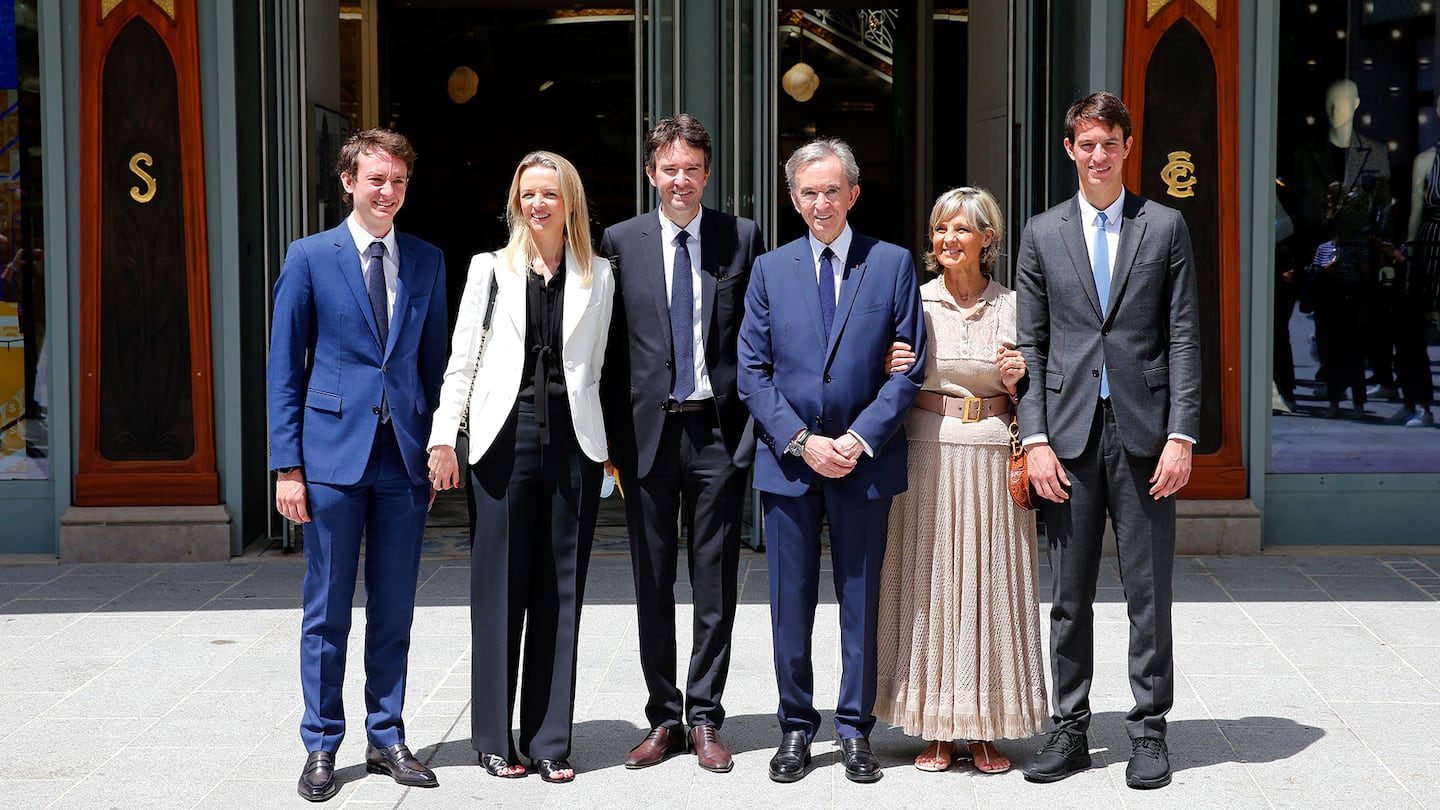
The Business of Fashion
Agenda-setting intelligence, analysis and advice for the global fashion community.

Agenda-setting intelligence, analysis and advice for the global fashion community.

LVMH chairman Bernard Arnault said he remained “quite confident” for 2023 even as growth at luxury’s biggest group sank below double-digits for the first time since 2020.
“There’s been an extremely strong start to 2023…If the reopening of China is confirmed, if it continues like this it should be a very good year,” Arnault said, taking questions from analysts at LVMH’s first in-person results conference in three years. “We will be able to grow, and keep growing our investments,” he added.
LVMH said fourth-quarter sales rose 9 percent on an organic basis — a slowdown compared to the group’s 20 percent growth in the first nine months, but still beating analyst estimates of 7 percent growth. Full-year sales for the group jumped 23 percent year-over-year to €79 billion ($86 billion).
Amid recurring Covid-related lockdowns, sales in LVMH’s “Asia excluding Japan” division (including the key Chinese market) fell 8 percent in the fourth quarter and were flat year-on-year.
ADVERTISEMENT
Luxury brands are counting on China easing pandemic restrictions and the resumption of its citizens’ travel to fuel growth this year amid a gloomier outlook for the West, where rampant inflation, high energy costs and rising interest rates are dampening economic confidence.
“China needs economic growth, for their people and for the success of the country…I’m fairly confident that the Chinese authorities will use the reopening period to re-dynamise growth,” Arnault said. “I am optimistic for the Chinese market.”
While most Chinese tourists aren’t expected to resume long-haul international travel before the second half of the year, off-shore shopping hub Macau is already enjoying a remarkable rebound, LVMH said.
Meanwhile, growth in North America slowed to 7 percent in the fourth quarter, which LVMH said was largely attributable to the strong dollar prompting American clients to purchase more abroad.
Fourth-quarter sales rose 10 percent at the group’s key fashion and leather goods division, which operates megabrands Louis Vuitton and Dior as well as labels including Celine, Loewe, Givenchy and Kenzo.
While LVMH does not typically break out sales for individual brands, the 73 year-old billionaire confirmed analyst estimates that flagship label Louis Vuitton had over €20 billion in annual sales last year, making it the first luxury brand to ever reach the milestone.
The group’s Celine brand crossed €2 billion in sales, Arnault said, meeting targets set when designer Hedi Slimane was hired to lead the house in 2018. Despite a rocky initial reception from the fashion world, Slimane’s black-and-white branding, monogrammed canvas mini-bags and “Triomphe” crossbodies have won a broad following, particularly among young luxury consumers.
The announcements come as Arnault, who is now the world’s wealthiest person since overtaking Tesla CEO Elon Musk late last year, reshuffles the senior ranks at LVMH as well as his family holding companies. Earlier this month, the group announced that Dior CEO Pietro Beccari would take the reigns of Louis Vuitton as Michael Burke transitions to an advisory role after a decade leading the brand. In turn, Louis Vuitton’s executive vice president for product Delphine Arnault — Arnault’s oldest child — is set to become CEO of Dior with support from a new managing director Charles Delapalme.
ADVERTISEMENT
It’s the biggest role yet accorded to one of Arnault’s children, and comes amid other changes that suggest the longstanding taboo around discussing the conglomerate’s succession plans is lifting. Last year LVMH raised the age limit for its CEO from 75 to 80, hinting that Arnault has no interest in handing over control soon. But he did convert his private holding company to a joint-stock partnership set to be owned in equal shares by his five children, as well as naming his son Antoine Arnault CEO of the Christian Dior SE financial vehicle through which the family exercises their controlling stake in LVMH. His children’s nominations could signal a broader changing of the guard underway.
Nonetheless, Arnault declined to comment on plans for his succession. “The retirement age seems to be a fashionable question, it’s been extended,” he said, referencing French president Emmanuel Macron’s unpopular push for sweeping reforms to the country’s pension system.
The recent executive shake-ups could have knock-on effects, including a potential creative recasting. A designer has yet to be named to replace Louis Vuitton’s menswear creative director Virgil Abloh, who died in November 2021. The appointment at luxury’s biggest brands could provoke a fresh round of designer musical chairs (Kering flagship Gucci is also searching for a new creative chief.)
LVMH declined to comment on the menswear designer search at Vuitton.
LVMH is part of a group of investors who, together, hold a minority interest in The Business of Fashion. All investors have signed shareholder’s documentation guaranteeing BoF’s complete editorial independence.
A performance by pop superstar Rosalía made Louis Vuitton’s menswear show a memorable spectacle, even as the brand has yet to name a successor to designer Virgil Abloh.
This week, Dior’s Pietro Beccari was named CEO of LVMH flagship Louis Vuitton, luxury’s biggest brand with €20 billion in annual sales. The job comes with high stakes and big shoes to fill.
Pietro Beccari will succeed Michael Burke leading LVMH flagship Louis Vuitton, while Delphine Arnault will become Dior’s new CEO as part of the luxury conglomerate’s biggest executive reshuffle in years.

Robert Williams is Luxury Editor at the Business of Fashion. He is based in Paris and drives BoF’s coverage of the dynamic luxury fashion sector.
The former CFDA president sat down with BoF founder and editor-in-chief Imran Amed to discuss his remarkable life and career and how big business has changed the fashion industry.
Luxury brands need a broader pricing architecture that delivers meaningful value for all customers, writes Imran Amed.
Brands from Valentino to Prada and start-ups like Pulco Studios are vying to cash in on the racket sport’s aspirational aesthetic and affluent fanbase.
The fashion giant has been working with advisers to study possibilities for the Marc Jacobs brand after being approached by suitors.